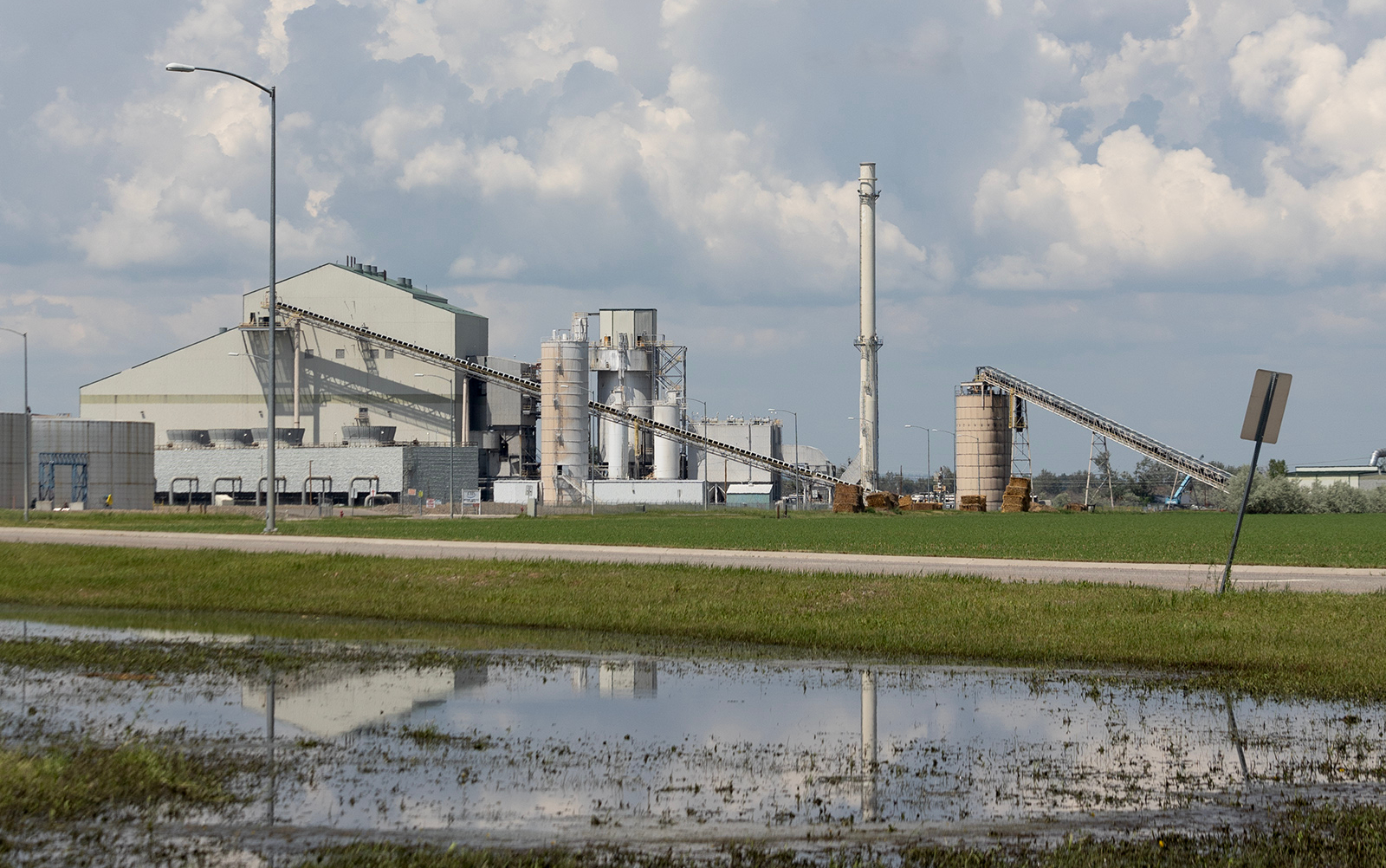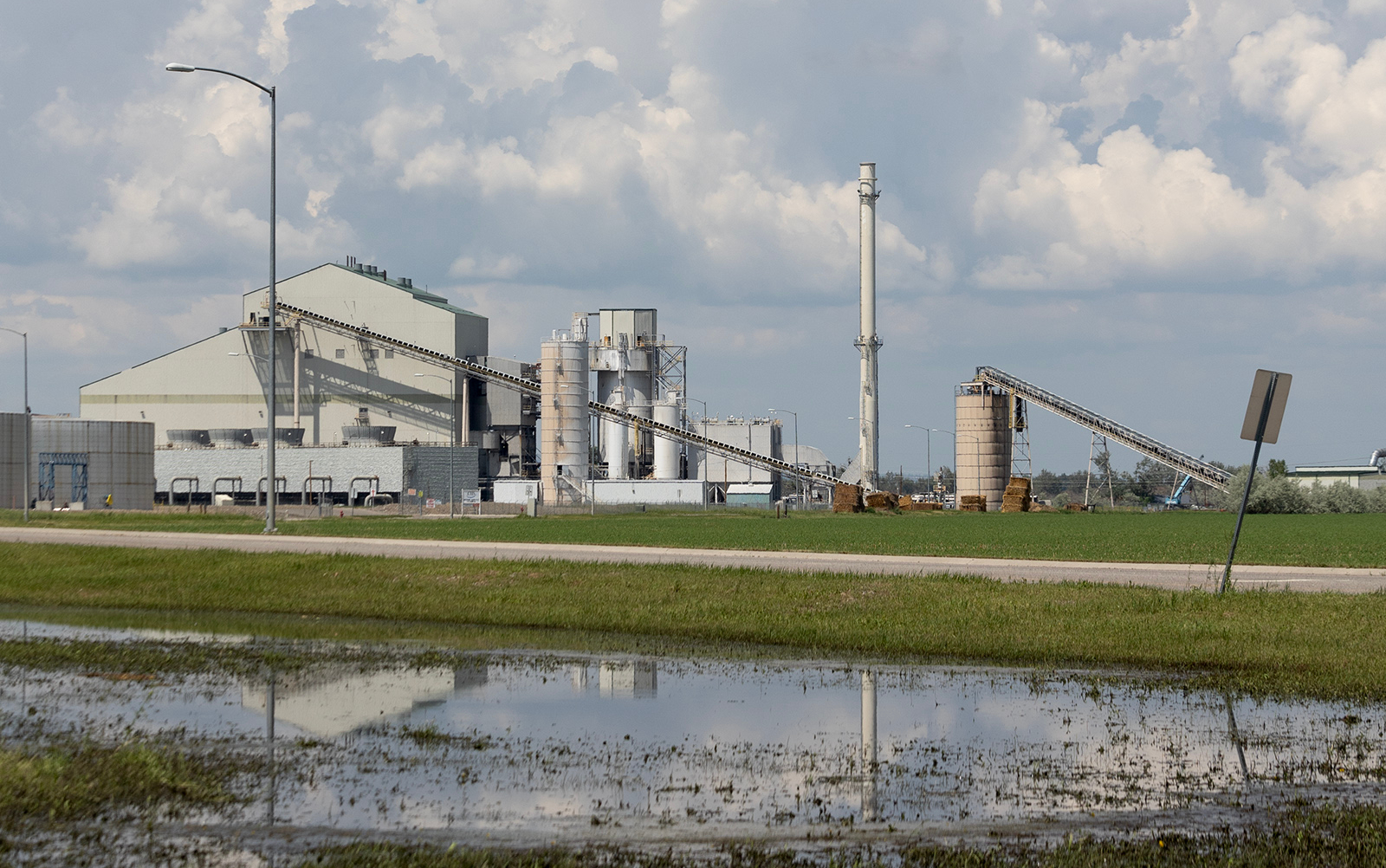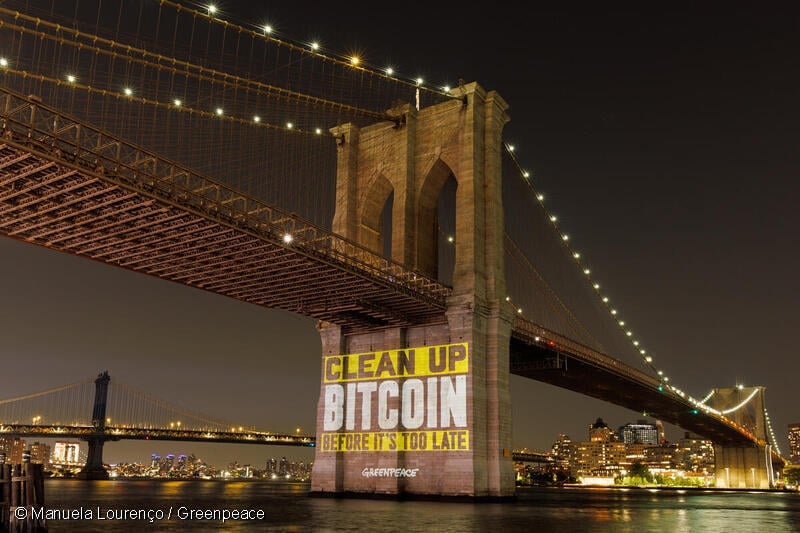Let’s take a look at some of the misinformation — and facts — surrounding Greenpeace USA’s campaign to clean up Bitcoin.
Greenpeace USA is proud of our long history of action to expose and deter global environmental degradation and unjust social and economic systems. Bringing the truth to light about ecological and social injustice means revealing these abuses and dispelling the swirl of misinformation surrounding many issues — including Bitcoin mining and its current impact on the climate and local communities living near mining rigs.
What’s the problem with Bitcoin mining?
Bitcoin is the largest cryptocurrency using the outmoded and high-energy “Proof of Work” (PoW) consensus mechanism. The “work” is specialized computers racing against one another to solve algorithms and validate transactions on a digital ledger. Once the algorithms are solved and transactions are validated, new digital assets are rewarded to the “miner” of the correct ledger, which is then added to the blockchain ledger.
The faster a computer works to solve the algorithmic puzzle, the greater the chances of winning the digital asset. Speed requires massive amounts of energy to run banks of computers collectively called mining rigs. As the puzzles become harder to solve, more computer power requires more energy. Recent reports estimate that in 2020, Bitcoin mining used 75.4 TWh/yr of electricity, which is more energy than used by all of Austria in 2020.1
Attempts to ameliorate PoW’s inherently wasteful process, either by using renewable energy and most other means rather than changing its code, are like putting lipstick on an energy hog.
Let’s take a look at some of the misinformation — and facts — surrounding Greenpeace USA’s campaign to clean up Bitcoin.
Myth: Greenpeace USA is against cryptocurrency.
Fact: We are not against cryptocurrency. We are against the destruction of our climate. As of October 2022, according to the Cambridge Bitcoin Electricity Consumption Index (CBECI), in 2022, Bitcoin mining emitted 48.35 MtCO2e of greenhouse gas (GHG) emissions2, equal to over 285,000 rail cars of coal burned in one year or over 10,300,000 car miles driven in one year3. We want Bitcoin and other Proof of Work cryptocurrencies to switch to a low-energy consensus mechanism. We are agnostic, but any protocol change should be at least as efficient as Proof of Stake, which uses 99.5% less electricity than Proof of Work. We are fully aware of the barriers to doing so, but it is technically and politically possible to change the code, as the recent Ethereum merge demonstrated.
We are also against environmental pollution and other impacts, such as electricity rate hikes affecting local communities living near mining rigs. As electricity demand increases from cryptoasset mining, more coal-power and natural gas-powered plants are used to provide electricity to the mining operations. These plants often cost more to operate and create noise, water, and air pollution. Coal combustion produces fine particles of sulfur dioxide, nitrogen oxides, and other air toxins.
Pollution controls are rarely deployed by the cryptocurrency mining company using the power from these fossil-fuel plants unless pushed to do so by regulators.4 These local impacts can also worsen existing environmental injustices burdening neighboring communities. This Environmental Working Group article summarizes local impacts and quotes local organizations fighting for a healthy environment.
Myth: Bitcoin mining uses renewable energy
Fact: Global Bitcoin mining is overwhelmingly dependent on coal-fired power. According to Cambridge Bitcoin Electricity Consumption Index (CBECI) research, Bitcoin mining’s largest single energy source is coal.5 The research found that coal and other fossil fuels (like oil and gas) account for almost two-thirds of the total electricity mix (62.4%), and only 26.3% are renewables and 11.3% from nuclear power.6
According to The Energy Bomb: How Proof-of-Work Cryptocurrency Mining Worsens the Climate Crisis and Harms Communities Now, a September 2022 guidebook by Earthjustice and Sierra Club, cryptocurrency mining companies and advocates often say that the rigs run on renewable energy simply because they are located near wind or solar farms. However, these mining companies don’t have a contractual relationship with those that operate renewable power sources7
The guidebook explains, “But simply locating new demand in a region rich in renewable resources does not mean that the new demand is served by the renewable resources of that region. When a load is added to the grid, it is served by the generation available on the grid at the time electricity is consumed (unless it specifically causes new generation to be built for its exclusive use). Large loads, like cryptocurrency mining operations, can cause changes in the generation mix as the grid dispatch patterns shift in response to the new load’s requirements. In almost every circumstance, new demand drives an instantaneous increase in the output of fossil generators.8”
Even if Bitcoin mining could be entirely fueled by renewable power, the amount of clean generation needed by the insatiable mining operations simply doesn’t exist. Residential, commercial, and industrial buildings, transportation, and material production, among other essential areas, must be prioritized for this future use of renewable generation.
Myth: Cryptocurrency mining can store energy to be used when electricity consumption is high, like during an extended heat wave.
Fact: Electricity used by a mining operation cannot be exported or redeployed elsewhere, nor can it provide energy storage capacity or optimize the functioning of the grid.9 When miners increase the demand on the electrical grid, they typically increase electricity rates for all customers. For example, in Plattsburgh, N.Y., residents and small businesses collectively paid $244 million more in higher electric bills in one year due to Bitcoin mining in their area10. Also, by increasing demand on the electrical grid, miners spur demand response utility programs and associated costs.11 ERCOT, Texas’s independent market monitor, estimates that Texans could pay an additional $1.5 billion for electricity in 2022, partly to cover payment to cryptocurrency miners that shut down operations during peak demand.12
When one industrial entity such as a Bitcoin mining operation needs large amounts of a finite resource, it increases demand and electricity costs and diminishes grid reliability for all customers.
Myth: Bitcoin mining helps the climate by using natural gas that would usually be burned in a process known as flaring, which emits GHGs.
Fact: Using flared gas might be better than letting it emit climate-polluting gases, but it is a pollutant that should be regulated and controlled by state and local authorities. The September 2022 White House Office of Science and Technology Policy report found that while using flared gas can reduce the amount of methane released, another option is using existing vapor capture technologies at oil and gas wells, which can reduce global methane emissions up to 50% by 2030.13
Instead, Bitcoin mining’s use of flared gas incentivizes more oil and gas drilling, as it converts what would be a loss for drillers into a new revenue source14. Additionally, when regulators locate and inspect wellheads used by miners, they find violations. For example, in January 2022, Pennsylvania Department of Environmental Protection inspectors found that 30 methane-gas-fired generators used for cryptocurrency mining were not authorized to do so.15
Myth: The purchase of carbon credits, renewable energy certificates, or the use of verifiable renewable energy can offset GHG emissions from Bitcoin mining.
Fact: Carbon credits or offsets permit the credit owner to emit a certain amount of greenhouse gases. One credit equals one ton of carbon dioxide emissions or the equivalent of other greenhouse gases. Renewable Energy certificates (RECs) are issued when one megawatt-hour (MWh) of electricity is generated and delivered to the electricity grid from a renewable energy resource. Both offsets and RECs can help mitigate greenhouse gas emissions. However, they are increasingly viewed as a “complementary tool or additional tool” that should not delay or be a substitute for GHG emission reductions within a company’s or industry’s activities.16
Bitcoin miners often claim to be “carbon neutral” after purchasing these offsets or renewable energy certificates. Credits can be controversial, verification is complex, and may not reduce carbon pollution in many instances.17 While a mining operation using renewable energy can be independently verified as doing so, other key essential energy needs, such as industrial production, should be prioritized as we need to transition to a clean energy economy rapidly. The key is to reduce the massive amounts of energy used for Bitcoin mining in the first place, not create a problem, and seek creative new ways to ameliorate the impact.18
1 Page 2 Jones, B.A., Goodkind, A.L. & Berrens, R.P. Economic estimation of Bitcoin mining’s climate damages demonstrates closer resemblance to digital crude than digital gold. Sci Rep 12, 14512 (2022).https://doi.org/10.1038/s41598-022-18686-8.
2 https://www.jbs.cam.ac.uk/insight/2022/a-deep-dive-into-Bitcoins-environmental-impact/
3 US Environmental Protection Agency Greenhouse Gas Equivalencies Calculator: https://www.epa.gov/energy/greenhouse-gas-equivalencies-calculator#results
4 p. 15. DeRoche, M., Fisher, J., Thorpe, N., and Wachspress, M., The Energy Bomb: How Proof-of-Work Cryptocurrency Mining Worsens the Climate Crisis and Harms Communities Now (Sept. 2022).
5 https://www.jbs.cam.ac.uk/insight/2022/a-deep-dive-into-Bitcoins-environmental-impact/
6 Ibid.
7 p. 21. DeRoche, M., Fisher, J., Thorpe, N., and Wachspress, M., The Energy Bomb: How Proof-of-Work Cryptocurrency Mining Worsens the Climate Crisis and Harms Communities Now (Sept. 2022).
8 Ibid.
9 p. 24. DeRoche, M., Fisher, J., Thorpe, N., and Wachspress, M., The Energy Bomb: How Proof-of-Work Cryptocurrency Mining Worsens the Climate Crisis and Harms Communities Now (Sept. 2022).
10 Laura Counts, Power-hungry cryptominers push up electricity costs for locals, Berkeley Hass (Aug. 3, 2021), https://newsroom.haas.berkeley.edu/research/power-hungry-cryptominers-push-up-electricity-costs-for-locals/; Mateo Benetton et al., When Cryptomining Comes to Town: High Electricity-Use Spillovers to the Local Economy, SSRN (May 14, 2021), https://newsroom.haas.berkeley.edu/research/power-hungry-cryptominers-push-up-electricity-costs-for-locals/#:~:text=By%20looking%20at%20surges%20in,and%20%2412%20for%20small%20businesses
11 p. 25. DeRoche, M., Fisher, J., Thorpe, N., and Wachspress, M., The Energy Bomb: How Proof-of-Work Cryptocurrency Mining Worsens the Climate Crisis and Harms Communities Now (Sept. 2022).
12 Ibid.
13 P. 24. OSTP (2022). Climate and Energy Implications of Crypto-Assets in the United States. White House Office of Science and Technology Policy. Washington, D.C. September 8, 2022.
14 p. 12. DeRoche, M., Fisher, J., Thorpe, N., and Wachspress, M., The Energy Bomb: How Proof-of-Work Cryptocurrency Mining Worsens the Climate Crisis and Harms Communities Now (Sept. 2022).
15 p. 13. DeRoche, M., Fisher, J., Thorpe, N., and Wachspress, M., The Energy Bomb: How Proof-of-Work Cryptocurrency Mining Worsens the Climate Crisis and Harms Communities Now (Sept. 2022).
16 P. 28. OSTP (2022). Climate and Energy Implications of Crypto-Assets in the United States. White House Office of Science and Technology Policy. Washington, D.C. September 8, 2022.
17 p. 22. DeRoche, M., Fisher, J., Thorpe, N., and Wachspress, M., The Energy Bomb: How Proof-of-Work Cryptocurrency Mining Worsens the Climate Crisis and Harms Communities Now (Sept. 2022).
18 p. 23. DeRoche, M., Fisher, J., Thorpe, N., and Wachspress, M., The Energy Bomb: How Proof-of-Work Cryptocurrency Mining Worsens the Climate Crisis and Harms Communities Now (Sept. 2022).



